As winter draws to a close, Japan's camellias burst into bloom like red lights on the evergreen trees. Camellias are such a hallmark of spring that the character for them is written
using the ideographs that mean "spring tree".
The yabu-tsubaki is a species of camellia that grows wild on Oshima Island. There is a camellia festival held here between mid-January
and late March each year where you can see different varieties of camellia in bloom. Those who explore more of Oshima will find the kinds of dramatic views you can only get on a volcanic
island. We invite you to discover this wonderful world for an early taste of spring.
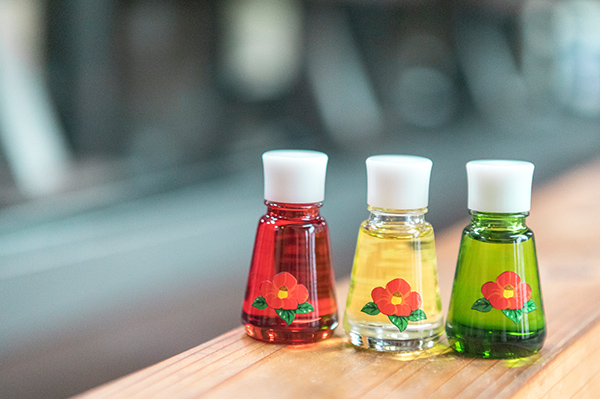
Camellia oil is one of the most recognizable signature products of Oshima Island. Takada Seiyujo is a longstanding camellia oil refinery in Motomachi on the western side of the island. Founded 91 years ago, it extracts camellia oil using a ball-pressed compression method that is thought to result in a richer oil packed with nutrients. Their camellia oil can be used for a variety of purposes from cosmetic to culinary, and its simple, stylish packaging makes it a popular souvenir as well as a favorite among the islanders for daily applications.
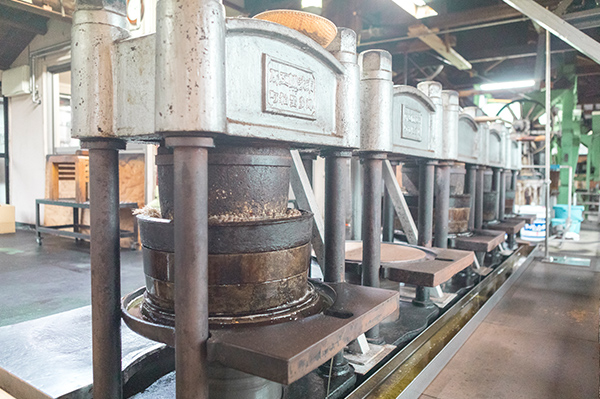
After about an hour of being pressed, the oil finally starts to gradually ooze out of the seeds. It is slowly filtered overnight, resulting in pure, 100% natural camellia oil.
The
camellia seeds used to make the oil are those that families living in the area find on the ground, dry, and bring to the refinery in exchange for cash. It is a practice that hasn't
changed for generations. Yoshito Takada, the fourth-generation head of the company, says that making camellia oil is a remnant of old island culture.
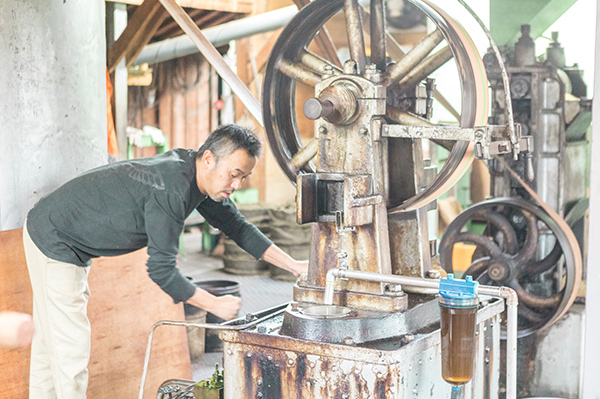
In recent years, however, challenges such as weather and a shortage of help have made it difficult to secure enough seeds from the flowers on the island. Still, Takada says that the company insists on using only "island seeds", including those from neighboring islands. He hopes that going forward, he'll be able to propose some everyday products tied to camellia oil. There are signs that he may be able to do something new related to food in the next several years.
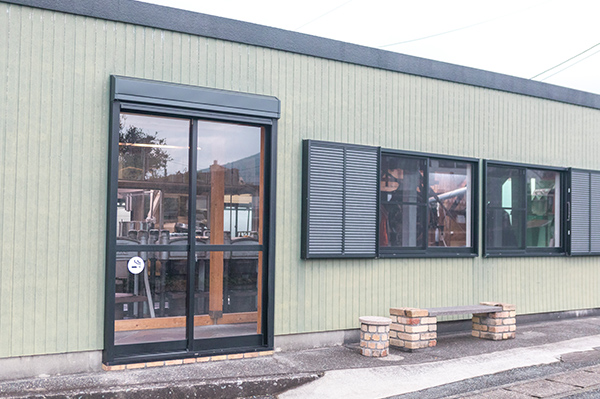
[DATA]
Takada Seiyujo
Address:1-21-1 Motomachi, Oshima, Tokyo
Hours:10:00~17:00
Closed: irregular
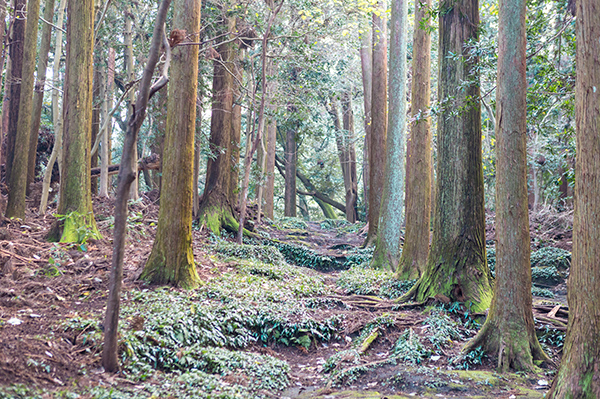
We decided to go to the west coast of the island in time for sunset, so we headed to the Senzu region in the northeastern part of Oshima while it was still light.
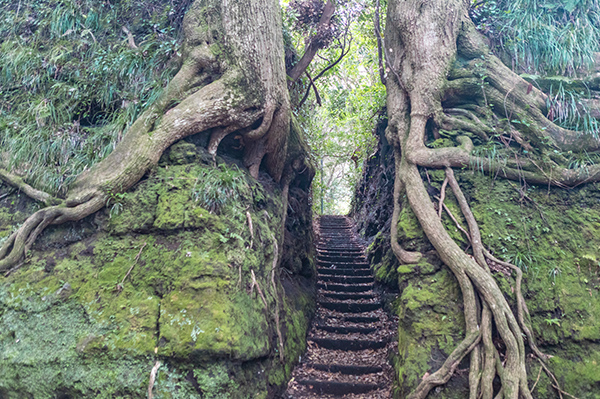
Places like the road through dense cedar groves that leads up to the mystical Hajikama Shrine and Senzu no Kiritoshi, a pathway that cuts through giant trees clinging to rocks and
feels like a doorway into another world, create powerful visuals, making them popular photo spots on social media as well. Wandering through the island settlements with their old
stone walls makes it feel as if you've drifted into a scene where time has stopped.
One of the highlights of this area between January and March is the camellia tunnel, an
unbroken row of camellia trees nearly a hundred meters long. It's a great place to enjoy a stroll.
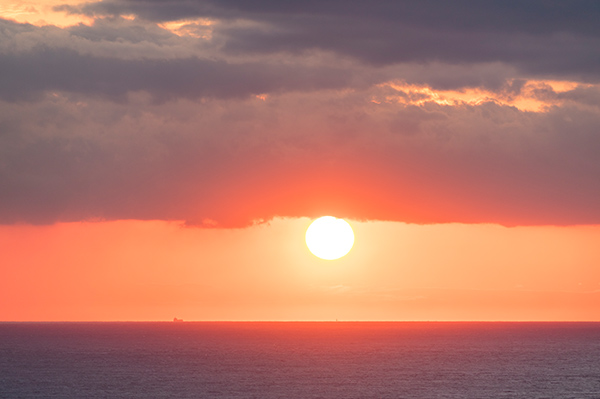
As the evening drew closer, we headed to the west coast. When the weather is nice, you can catch beautiful sunset views from anywhere along Sunset Palm Line, a cycling road that
connects Nodahama Beach on the northern tip of the island to Motomachi Port. It provides such a great vantagepoint that you can sometimes see Mt. Fuji to the north, the Izu Peninsula
to the west, and islands like Toshima, Niijima, Shikinejima, and Kouzushima to the south. It was a little cloudy on the day we were there, but mostly clear. When the sun set, we
stopped and just stared out over the water and looked between the clouds as the setting sun slowly sunk into the water.
As we took in the stunning sight of the sunset over
the water, we prayed for better weather the next day. We were really hoping for it to clear up.
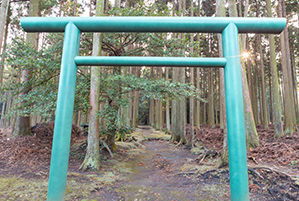
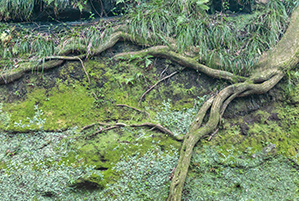

If you're planning to stay on the island, Oshima offers plenty of options—from traditional hot spring inns and hotels to guest houses. There is also a comfortable hostel called BookTeaBed IZUOSHIMA. As the name suggests, it offers a combination of books, a café, and accommodations (there are also BookTeaBed locations in Ginza and Azabu-Juban).
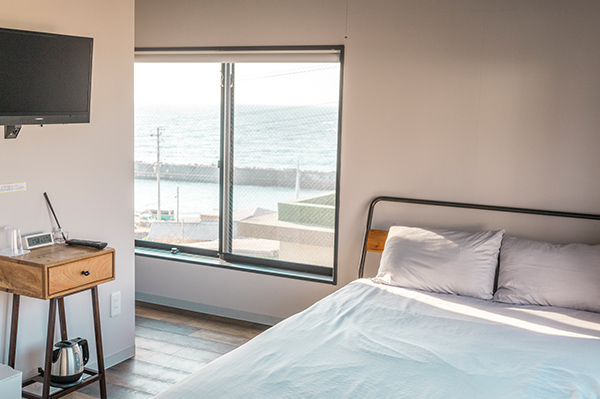
Everyone from single travelers to families and friends traveling together are welcome, and there are five types of rooms to choose from depending on the number of people in your
party.
You are welcome to read whatever books and manga are available in the hostel during your stay, and though you're likely to stay up too late reading if you take them back
to your room, that's doubtless one of the pleasures of being on vacation. You could even go with the idea of getting lost in as many books as possible during your stay.

[DATA]
BookTeaBed IZUOSHIMA
Address:2-3-4 Motomachi, Oshima, Tokyo
TEL:04992-7-5972

It was a bright, clear morning and I was eager to get to work, so I headed to Cima←Jima near Okata Port where they sell freshly baked bread starting at 7 AM.
The delicious
aromas hit me as soon as I stepped into the entryway of this old Japanese home. The fluffy sweet bean buns sitting in a wooden box looked so delicious that I picked one up—and
couldn't believe how heavy it was! Their weighty stuffed breads are packed with sweet beans, tuna salad, onion, and more—but their prices are surprisingly friendly.

The dough is allowed to rest overnight, so when they bake it first thing in the morning it tastes rich and delicious. You can tell that they take special care with everything they
make.
Miho Suzuki is the owner of the shop. "We try to make things that the locals want to buy regularly," she told me. "We love when tourists stop in, so on Saturdays we open
at 6 AM when the ferries arrive." She moved here just to open this shop, so she's eager to offer the things people want to buy.
The name Cima←Jima (pronounced
"shima-jima") comes from the fact that Suzuki moved from Ojima in Koto City to Oshima. That definitely makes it easy to remember!
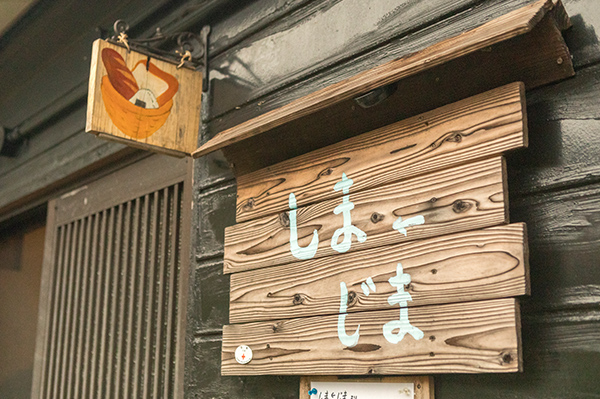
[DATA]
Cima←Jima
Address:9 Okata, Oshima, Tokyo
Hours:7:00~15:00(Closed as soon as it runs out)
Closed: irregular